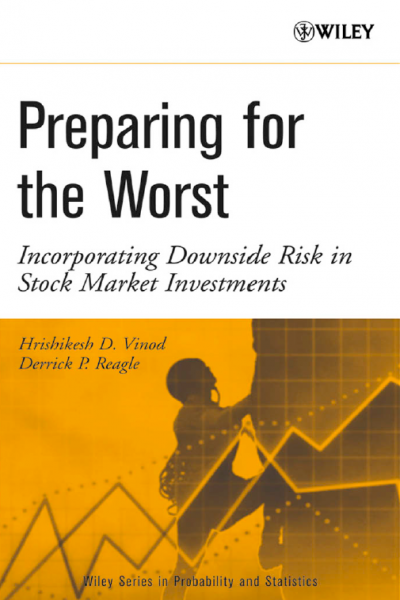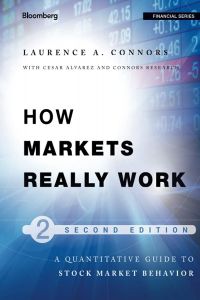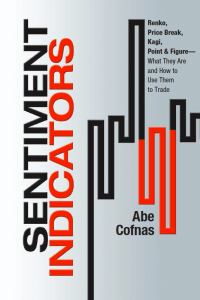1. Quantitative Measures of the Stock Market 1
1.1. Pricing Future Cash Flows, 1
1.2. The Expected Return, 6
1.3. Volatility, 9
1.4. Modeling of Stock Price Diffusion, 14
1.4.1. Continuous Time, 16
1.4.2. Jump Diffusion, 17
1.4.3. Mean Reversion in the Diffusion Context, 18
1.4.4. Higher Order Lag Correlations, 19
1.4.5. Time-Varying Variance, 20
1.5. Efficient Market Hypothesis, 22
1.5.1. Weak Form Efficiency, 23
1.5.2. Semi-strong Form Efficiency, 24
1.5.3. Strong Form Efficiency, 25
Appendix: Simple Regression Analysis, 26
2. A Short Review of the Theory of Risk Measurement 29
2.1. Quantiles and Value at Risk, 29
2.1.1. Pearson Family as a Generalization of the Normal
Distribution, 32
2.1.2. Pearson Type IV Distribution for Our Mutual Fund
Data, 36
2.1.3. Nonparametric Value at Risk (VaR) Calculation from
Low Percentiles, 37
2.1.4. Value at Risk for Portfolios with Several Assets, 37
2.2. CAPM Beta, Sharpe, and Treynor Performance Measures, 39
2.2.1. Using CAPM for Pricing of Securities, 43
2.2.2. Using CAPM for Capital Investment Decisions, 43
2.2.3. Assumptions of CAPM, 44
2.3. When You Assume . . . , 44
2.3.1. CAPM Testing Issues, 44
2.4. Extensions of the CAPM, 46
2.4.1. Observable Factors Model, 47
2.4.2. Arbitrage Pricing Theory (APT) and Construction of
Factors, 48
2.4.3. Jensen, Sharpe, and Treynor Performance Measures, 50
Appendix: Estimating the Distribution from the Pearson Family of
Distributions, 52
3. Hedging to Avoid Market Risk 55
3.1. Derivative Securities: Futures, Options, 55
3.1.1. A Market for Trading in Futures, 57
3.1.2. How Smart Money Can Lose Big, 60
3.1.3. Options Contracts, 61
3.2. Valuing Derivative Securities, 63
3.2.1. Binomial Option Pricing Model, 65
3.2.2. Option Pricing from Diffusion Equations, 66
3.3. Option Pricing Under Jump Diffusion, 68
3.4. Implied Volatility and the Greeks, 70
3.4.1. The Role of D of an Option for Downside Risk, 71
3.4.2. The Gamma (G) of an Option, 71
3.4.3. The Omega, Theta,Vega, and Rho of an Option, 71
Appendix: Drift and Diffusion, 73
4. Monkey Wrench in the Works: When the Theory Fails 75
4.1. Bubbles, Reversion, and Patterns, 75
4.1.1. Calendar Effects, 76
4.1.2. Mean Reversion, 77
4.3. Testing for Normality, 83
4.3.1. The Logistic Distribution Compared with the
Normal, 83
4.3.2. Empirical cdf and Quantile–Quantile (Q–Q) Plots, 85
4.3.3. Kernel Density Estimation, 86
4.4. Alternative Distributions, 88
4.4.1. Pareto (Pareto-Levy, Stable Pareto) Distribution, 89
4.4.2. Inverse Gaussian, 90
4.4.3. Laplace (Double-Exponential) Distribution, 91
4.4.4. Azzalini’s Skew-Normal (SN) Distribution, 91
4.4.5. Lognormal Distribution, 95
4.4.6. Stable Pareto and Pareto-Levy Densities, 96
5. Downside Risk 101
5.1. VaR and Downside Risk, 101
5.1.1. VaR from General Parametric Densities, 103
5.1.2. VaR from Nonparametric Empirical Densities, 104
5.1.3. VaR for Longer Time Horizon (t > 1) and the IGARCH
Assumption, 107
5.1.4. VaR in International Setting, 109
5.2. Lower Partial Moments (Standard Deviation, Beta, Sharpe, and
Treynor), 110
5.2.1. Sharpe and Treynor Measures, 113
5.3. Implied Volatility and Other Measures of Downside Risk, 115
6. Portfolio Valuation and Utility Theory 119
6.1. Utility Theory, 119
6.1.1. Expected Utility Theory (EUT), 120
6.1.2. A Digression: Derivation of Arrrow-Pratt Coefficient of
Absolute Risk Aversion (CARA), 125
6.1.3. Size of the Risk Premium Needed to Encourage Risky
Equity Investments, 126
6.1.4. Taylor Series Links EUT, Moments of f(x), and
Derivatives of U(x), 127
6.2. Nonexpected Utility Theory, 129
6.2.1. A Digression: Lorenz Curve Scaling over the Unit
Square, 129
6.2.2. Mapping from EUT
6.3. Incorporating Utility Theory into Risk Measurement and
Stochastic Dominance, 135
6.3.1. Class D1 of Utility Functions and Investors, 135
6.3.2. Class D2 of Utility Functions and Investors, 135
6.3.3. Explicit Utility Functions and Arrow-Pratt Measures of
Risk Aversion, 136
6.3.4. Class D3 of Utility Functions and Investors, 137
6.3.5. Class D4 of Utility Functions and Investors, 137
6.3.6. First-Order Stochastic Dominance (1SD), 139
6.3.7. Second-Order Stochastic Dominance (2SD), 140
6.3.8. Third-Order Stochastic Dominance (3SD), 141
6.3.9. Fourth-Order Stochastic Dominance (4SD), 142
6.3.10. Empirical Checking of Stochastic Dominance Using
Matrix Multiplications and Incorporation of 4DPs of
Non-EUT, 142
6.4. Incorporating Utility Theory into Option Valuation, 147
6.5. Forecasting Returns Using Nonlinear Structures and Neural
Networks, 148
6.5.1. Forecasting with Multiple Regression Models, 149
6.5.2. Qualitative Dependent Variable Forecasting Models, 150
6.5.3. Neural Network Models, 152
7. Incorporating Downside Risk 155
7.1. Investor Reactions 155
7.1.1. Irrational Investor Reactions, 156
7.1.2. Prospect Theory, 156
7.1.3. Investor Reaction to Shocks, 158
7.2. Patterns of Downside Risk, 160
7.3. Downside Risk in Stock Valuations and Worldwide
Investing, 163
7.3.1. Detecting Potential Downturns from Growth Rates of
Cash Flows, 163
7.3.2. Overoptimistic Consensus Forecasts by Analysts, 164
7.3.3. Further Evidence Regarding Overoptimism
of Analysts, 166
7.3.4. Downside Risk in International Investing, 166
7.3.5. Legal Loophole in Russia, 167
7.3.6. Currency Devaluation Risk, 167
7.3.7. Forecast of Currency Devaluations
7.3.8. Time Lags and Data Revisions, 169 7.3.9. Government Interventions Make Forecasting Currency Markets Difficult, 170 7.4. Downside Risk Arising from Fraud, Corruption, and International Contagion, 171 7.4.1. Role of Periodic Portfolio Rebalancing, 172 7.4.2. Role of International Financial Institutions in Fighting Contagions, 172 7.4.3. Corruption and Slow Growth of Derivative Markets, 173 7.4.4. Corruption and Private Credit Rating Agencies, 174 7.4.5. Corruption and the Home Bias, 175 7.4.6. Value at Risk (VaR) Calculations Worsen Effect of Corruption, 178 8. Mathematical Techniques 181 8.1. Matrix Algebra, 181 8.1.1. Sum, Product, and Transpose of Matrices, 181 8.1.2. Determinant of a Square Matrix and Singularity, 183 8.1.3. The Rank and Trace of a Matrix, 185 8.1.4. Matrix Inverse, Partitioned Matrices, and Their Inverse, 186 8.1.5. Characteristic Polynomial, Eigenvalues, and Eigenvectors, 187 8.1.6. Orthogonal Vectors and Matrices, 189 8.1.7. Idempotent Matrices, 190 8.1.8. Quadratic and Bilinear Forms, 191 8.1.9. Further Study of Eigenvalues and Eigenvectors, 192 8.2. Matrix-Based Derivation of the Efficient Portfolio, 194 8.3. Principal Components Analysis, Factor Analysis, and Singular Value Decomposition, 195 8.4. Ito’s Lemma, 199 8.5. Creation of Risk-Free Nonrandom g(S, t) as a Hedge Portfolio, 201 8.6. Derivation of Black-Schole







